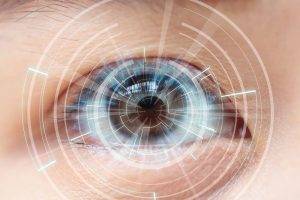Eye Allergies and LASIK: What Patients Should Know
May 4, 2016Understanding Your Vision: Higher vs. Lower Order Aberrations
August 2, 2016Patients can trust the team at the Laser Vision Correction Center of New Jersey. Serving the greater West Orange area, we offer patients the lastest in LASIK surgery, always with a focus on enhanced safety and improved vision quality.
Sometimes complications after surgery may occur. It’s helpful for patients to understand what these may involve and how they can be treated. With that in mind, let’s go over the basics of flap complications and how we can prevent them and address them.
The Way LASIK Surgery Is Performed
To understand flap complications, it’s important to first understand how LASIK is performing.
During LASIK, a small flap is created in the epithelium, which is the topmost layer of the cornea. The flap is lifted up and the shape of the cornea is adjusted via laser. The flap is then set down so patients can heal.
What Is a Flap Complication?
A flap complication refers to various problems that may occur related to the creation of the epithelial flap or issues with the flap after it has been set down to heal.
Flap complications can lead to vision problems as well as serious pain and discomfort.
Types of Flap Complications
Some common kinds of flap complications include the following listed below:
- Issues with Flap Creation – Sometimes an issue arises with the initial creation of the corneal flap, meaning irregularities in shape and quality.
- Wrinkles on the Epithelial Flap – Another potential flap complication involves wrinkles on the corneal flap when it is set back down after surgery.
- Epithelial In-Growth – Cells on the outer part of the epithelium are different from cells on the inner part of the epithelium. In-growth occurs when the cells on the outside begin growing on the inside.
- Irregular Astigmatism – This flap complication occurs when the flap heals in an uneven or curved manner after it has been set down.
- Diffuse Lamellar Keratitis (DLK) – Also known as “sands of the Sahara,” this type of flap complication involves inflammation under the corneal flap. The discomfort can be quite severe.
- Keratoconus/Keratectasia – When the cornea is weakened by the flap, it can lead to an outward bulging of the eye, making the eye appear to be shaped like a football rather than a baseball.
How Common Are Flap Complications?
Flap complications are thankfully not terribly common. Though they may occur in a few instances, they tend to be rare for most patients who undergo LASIK surgery.
Treatments for Flap Complications
When a flap complication occurs, a secondary or corrective procedure is often performed in order to revise the flap and improve its shape and overall quality. This improves vision and can also prevent serious issues with inflammation and discomfort.
Preventing Flap Complications
Patients can prevent flap complications from occurring by following their pre-op and post-op surgical instructions to the letter. These instructions are designed to ensure optimal healing and prevent major problems.
LASIK surgeons can prevent flap complications from occurring by carefully planning each procedure, using advanced techniques and technologies to enhance safety and minimize potential complications, and performing the surgeries themselves with the utmost care.
Contact the Laser Vision Correction Center of New Jersey
For more information about treating and preventing flap complications and how we can help you see clearly again, be sure to contact our advanced eye care and laser vision correction center today. The team at the Laser Vision Correction Center of New Jersey is here to help you make the best choices possible with regard to eye care.



